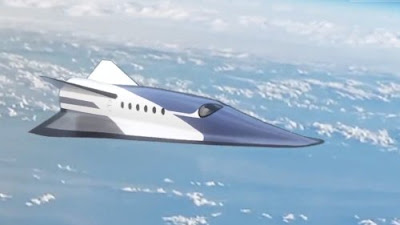DAILY INNOVATION BRIEF by Edward Kane
DAILY INNOVATION BRIEF
By Journalists Edward Kane & Maryanne Kane
POWERFUL HYDROGEN-ELECTRIC PLANE PARTNERS
Source: Natilus & ZeroAvia
- British-American hydrogen aircraft company ZeroAvia & US cargo plane development company Natilus are co-developing a hydrogen electric autonomous cargo plane
- These two companies have highly advanced technologies, are very well funded & have billions of dollars in pre-orders
- ZeroAvia's successfully-tested ZA600 hydrogen-electric engine will be the powerful propulsion system for Natilus' blended wing body cargo plane
- ZeroAvia has won permits to fly in the US, has been developing zero emissions planes for ten years and has $10 billion in pre-orders
- The ZA600 hydrogen electric engine successfully powered a 19-seat passenger plane last January
- Now it will power Natilus' Kona cargo plane that has a 85 foot wingspan
- This is a powerful aviation partnership as Natilus has nearly $7 billion in order commitments for 460 of its cargo planes.
HOW TO RECOGNIZE AI GENERATED FAKE PHOTOS
Source: Stock
- AI generated fake photos and videos are proliferating on social media
- Just last week fake photos of a large explosion at the Pentagon were posted & looked so real many believed the event had happened, but it didn't
- So, how can you differentiate between real or fake photos & video postings so that you're not taken in by a non-event?
- Some advice from experts:
- Identify the source - if it's a news organization or a corporation, it's highly unlikely to be a fake
- Check out other news sources to see if they're covering it
- Closely examine the photo for any distortions, examine the surroundings and use reverse image search tools
- Look for signs of fakeness, such as the same sized and same shaped carrots in the bunny photo
- Use an AI image detector like Optic AI that will tell you if it was AI generated
- For videos telltale signs of being deep fake include lack of lip sync, abnormal head movements and odd skin tones
- With the accelerating postings of fake photos generated by AI, the best approach is due diligence on the origin and any signs of fakeness.
ROBOTS IN SWEATERS
Source: Carnegie Mellon University
- Researchers at Carnegie Mellon University Robotics Institute have developed special, smart sweaters for robots to learn the feeling of a human touch
- The purpose is safety, to prevent the robots from colliding with humans by sensing they are there and to provide the robots with much more flexibility and versatility in the work environment
- Called RobotSweater, it has two layers of yarn made with metallic fiber that conducts electricity to warn the robot to avoid a collision with a human
- This is important innovation because some industrial robots weigh hundreds of pounds and could seriously injure a person by colliding with it
- The sweater is essentially a skin with sensors that pinpoints where the human contact is coming from so the robot can avoid it
- Applications for the sweatered robots include industrial, manufacturing, automotive, hospital workplaces and more.
For more news stories like this, FLIGHT PATH TO THE FUTURE




%20ROBO%20sweater.jpg)



Comments
Post a Comment